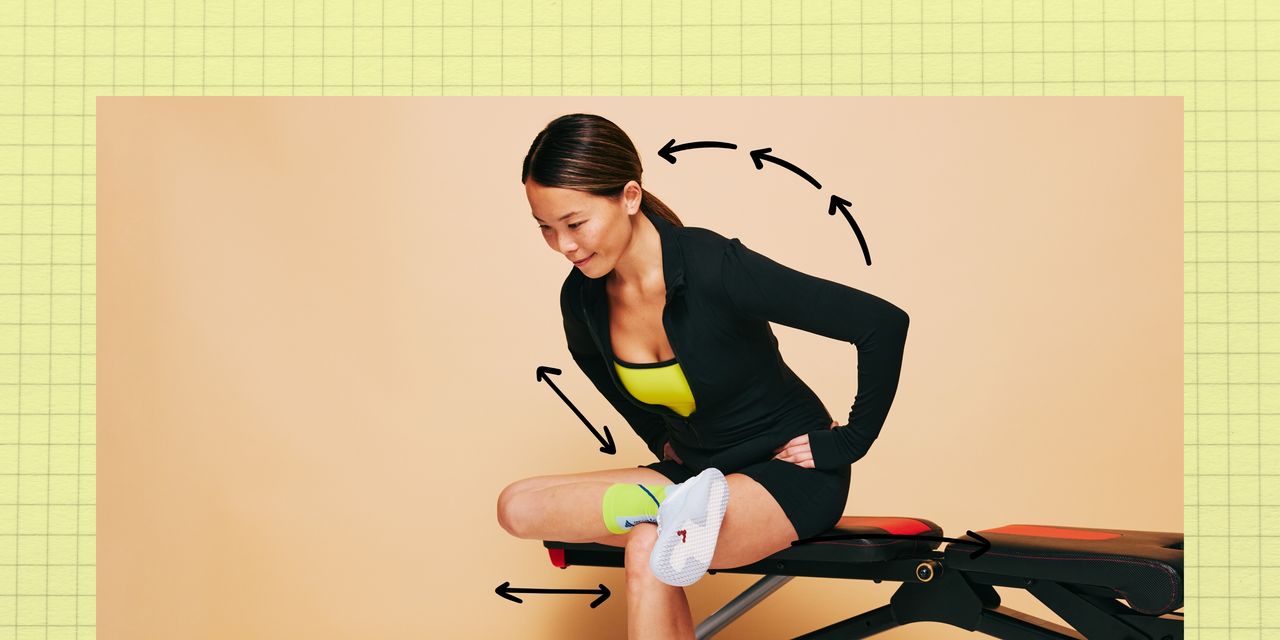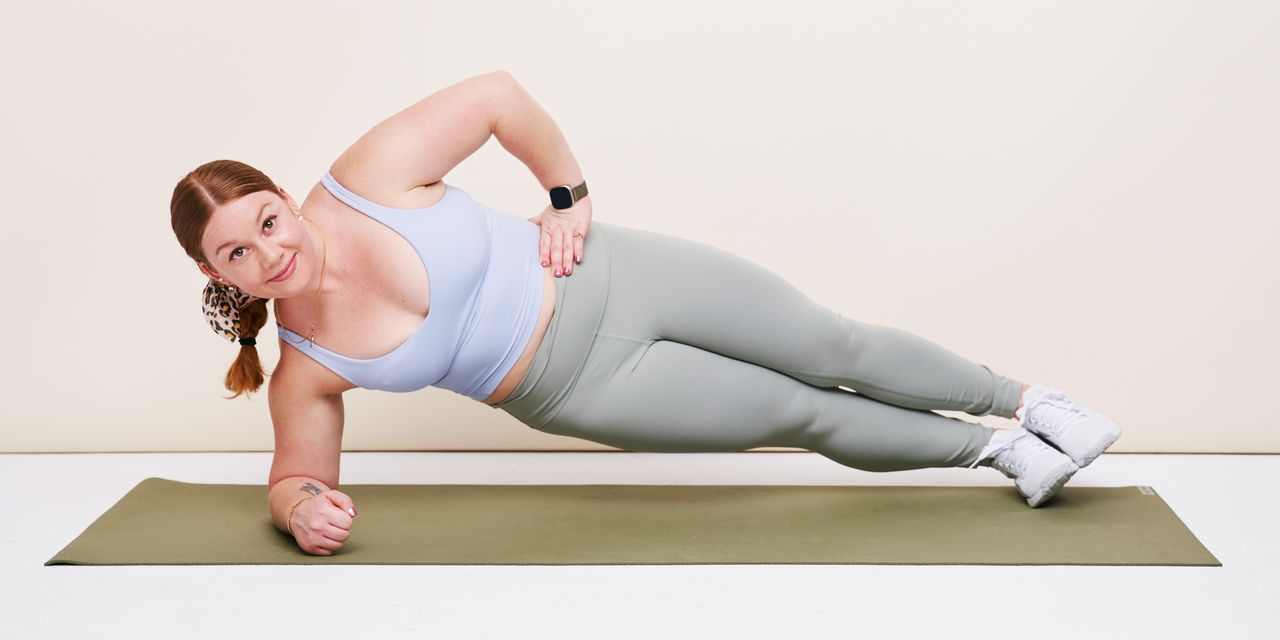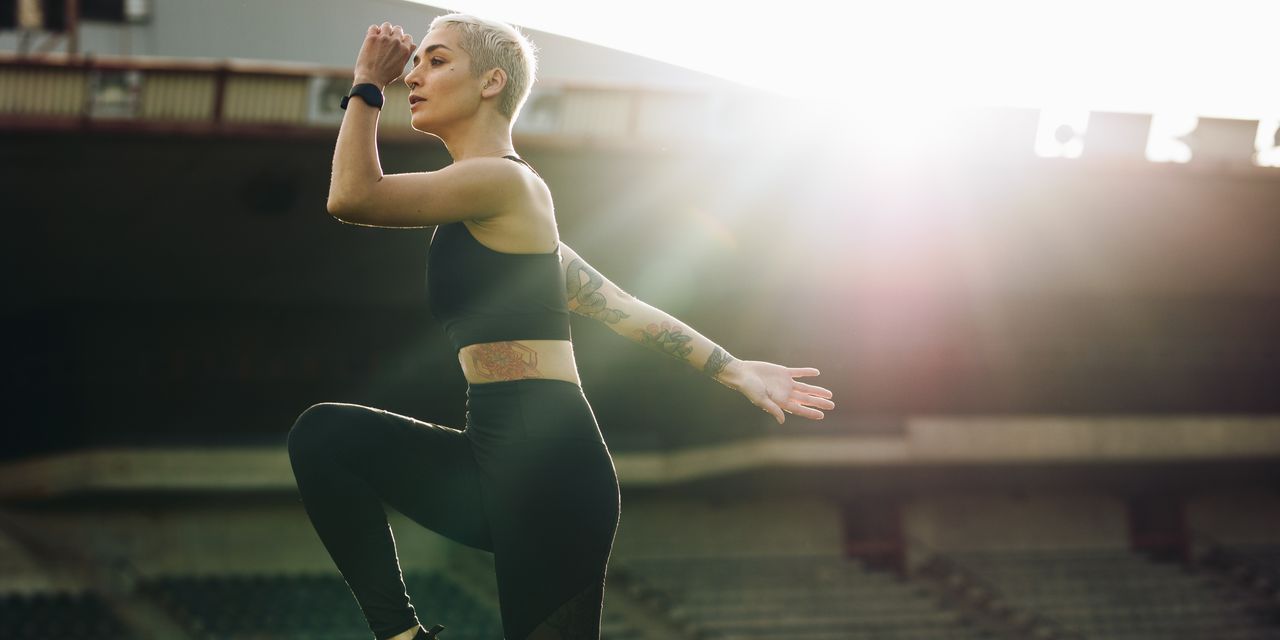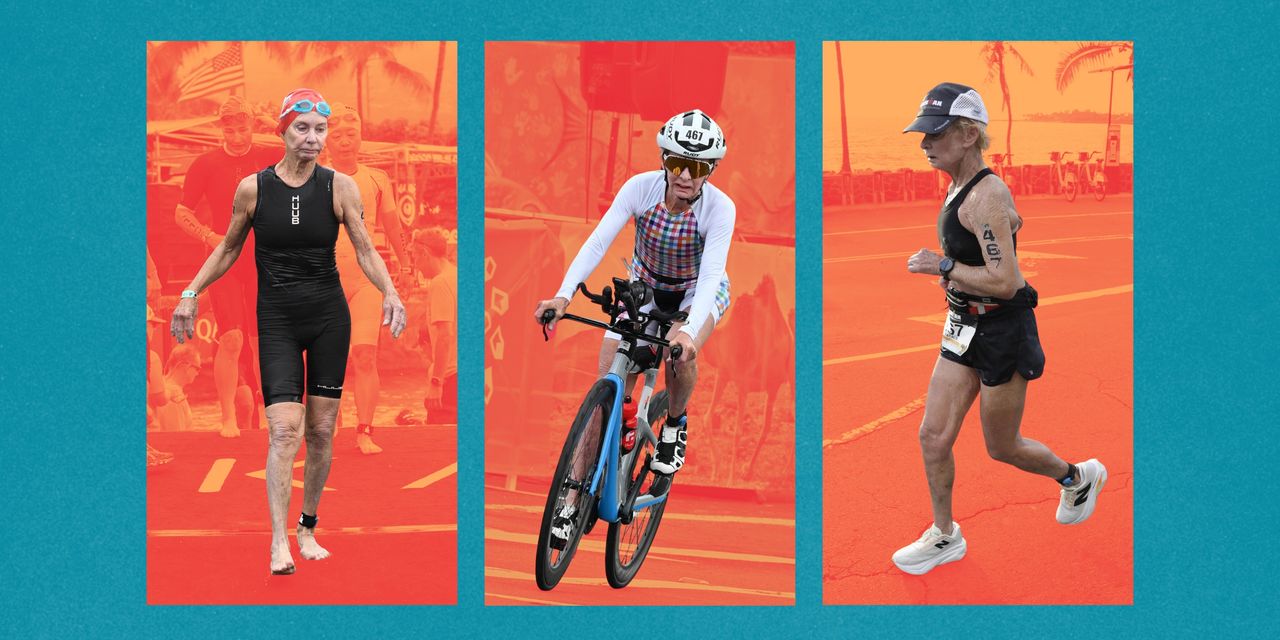This Office-Friendly Stretch Will Loosen Up Your Tight Butt

We don’t need to tell you that tons of sitting is a recipe for tight, achy hips. Good news: You can fight that with the seated figure-4 stretch, a butt-loosening move you can easily bust out during your next road trip, long-haul flight, or marathon Zoom call session.
Because this stretch is performed from a chair—yep, it’s a variation of the figure-4 stretch you’d typically do your back on a mat—it’s an easy, convenient one to work into your day. You don’t need to get on the ground or move your limbs around, making it ideal for those times when you can’t get out of your seat but desperately need relief.
That’s one of the reasons Heather Jeffcoat, PT, DPT, founder of Fusion Wellness & Femina Physical Therapy and spokesperson for the American Physical Therapy Association, frequently recommends it to patients. The seated figure-4, she tells SELF, is “very simple to just incorporate while you’re there at your desk.” For more intel on how to get it done—and why it works so well in the first place—keep on reading.
What muscles does the seated figure-4 stretch?
When you do this stretch, you park your butt in your chair, place one ankle across the opposite thigh and tip your torso forward. You’ll feel it in the sides and back of your hip on the leg that’s propped up, Dr. Jeffcoat explains. Specifically, it targets your piriformis (a thin, flat butt muscle that runs from your low back to the top of your thigh) as well as your gluteus medius and gluteus minimus (two small glute muscles that form your side-butt). It also hits some of your gluteus maximus (biggest butt muscle), along with your quadratus femoris and obturator externus (two small hip rotator muscles), Dr. Jeffcoat says.
Why is the seated figure-4 stretch so beneficial?
Spending a lot of time sitting on your butt can tighten up your glutes and hips, causing aches and pains. So people with sedentary routines will benefit from this, Dr. Jeffcoat explains. (Hello, desk workers and Netflix bingers everywhere!). That’s because when you bend your leg and prop that ankle up on the opposite thigh, you lengthen all the muscles we mentioned above. And that can bring relief if you have tightness or tenderness there. With the seated figure-4, “we’re trying to improve mobility in the area and decrease pain,” Dr. Jeffocat says.
But the stretch isn’t just for desk workers. Folks who spend a lot of time standing or walking—like nurses, grocery store workers, or cooks—could benefit from it too. As Dr. Jeffcoat explains it, spending time on two feet fires up your glutes (especially the glute medius, which plays a big role in stabilizing our hips and pelvis), and you don’t want to always put your muscles to work without also stretching them. That’s because it’s important to maintain a balance of stability (which happens when you fire up the muscle) and mobility (which happens when you stretch it). If you only work the muscle without ever lengthening it, that imbalance can trigger pain, dysfunction, or feelings of tightness, she explains. In sum, people on both ends of the movement spectrum could benefit from adding this move into their routine.
One final perk of the seated figure-4? If you can make it part of a mindfulness practice—meaning, you’re not multitasking while you hold it, but instead take that time to connect with your body–it can provide the secondary benefit of stress reduction, Dr. Jeffcoat says. (Of course, that’s true of most any type of stretching!).
How is seated figure-4 different from the OG version on the floor?
First we’ll start with the similarities: Whether you’re in a chair or on the ground, the figure-4 stretch hits all the same areas of your glutes and hips. “The muscles that are stretched are the same; you’re just moving into a different position,” Dr. Jeffcoat says. That means either one can be a good option for people with tight, cranky hips.
There are a few differences, though. The convenience factor is a biggie: The seated figure-4 stretch is a lot easier to slot into your day-to-day, since you don’t have to get down on the ground to do it. That means it can be a more practical and discreet way to loosen up your tense butt, which is key if you’re in a situation where plopping down onto a mat really isn’t an option–—for example, if you’re in an office, on an airplane, or taking a long car ride.
But the on-the-floor figure-4 has its advantages, too, including the fact that it can be modified to be less intense, which isn’t the case with the chair-supported version. In the seated stretch, “you have to have a good amount of range of motion to get your ankle up to your knee,” Dr. Jeffcoat explains. This amount of mobility may not feel great for some people, including those with back, knee, or hip pain or issues. But in the lying down version, you have the option to step your grounded foot further away from your body so that your other leg isn’t as tucked in towards your body. “That would allow you to have a more gradual stretch,” Dr. Jeffcoat says.
How to work it into your routine
How often to do the seated figure-4 all depends on how cranky your hips are. If you’re plagued by a super-tight butt, do this move one to two times a day, at least four to five times a week (though daily is ideal), Dr. Jeffcoat says. If your hips feel okay and you’re stretching to just maintain mobility, do it two to three times a week, or after activities where you’re really firing up your glutes and hips, like a lower-body workout or a long day on your feet.
Each time you do it, hold it for six slow, deep breaths on each side, which equates to about 30-second holds, Dr. Jeffcoat says. Bonus: By focusing on your breathing, you automatically emphasize that secondary stress reduction benefit, she explains. Aim for two to three rounds per side; if you find one side is tighter than the other, do more rounds on that side than the looser side until you achieve balance between sides, Dr. Jeffcoat advises.
Keep in mind this stretch can hurt if you have issues with your hip or knee joints, since it requires hip rotation and knee flexion to get into position. It can also feel painful if the muscles the stretch targets are especially short and tight.
If the stretch is causing you pain, stop, Dr. Jeffcoat says. Prone figure-4 may be a more appropriate option for you, though you can check with your doctor or physical therapist to be sure. Same goes if you have acute back, knee, or hip pain. And if you’ve had recent surgery, or if you have osteoarthritis, definitely consult with a physical therapist before doing this stretch. It may be contraindicated post-surgery; if you have osteoarthritis and flex your spine while doing it—which isn’t correct form, but can happen if you’re not mindful—you can stress your vertebrae and possibly cause spinal issues, Dr. Jeffcoat says.
How to do the seated figur- 4 stretch
Ready to loosen up your tight hips? Here’s a visual demo, along with step-by-step instructions for mastering this stellar seated stretch.
Katie Thompson
- Sit down on a bench or step with your back straight and cross your right ankle over your left thigh in a figure four shape.
- With your hands on your hips and keeping a flat back, tip your torso forward. Stop when you feel a stretch in your right glute. Hold for six deep breaths.
- Switch sides and repeat.
To increase the stretch, press your hand against your thigh on the leg that’s bent, Dr. Jeffcoat says. If you’re struggling to maintain a neutral spine, roll up a towel and place it against your low back for support, she adds.
Demoing the move above is Winnie Yu, a doctor of physical therapy, certified strength and conditioning specialist, and running specialist.
Related:




